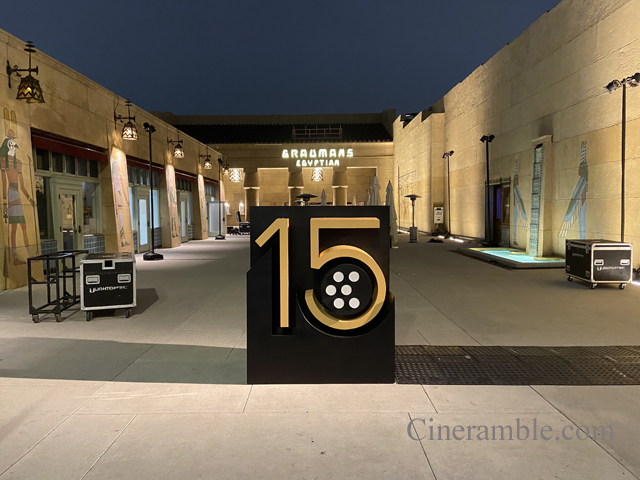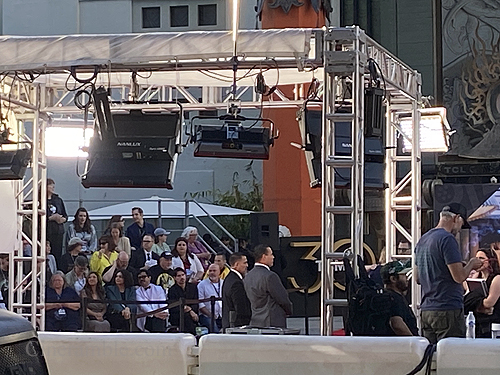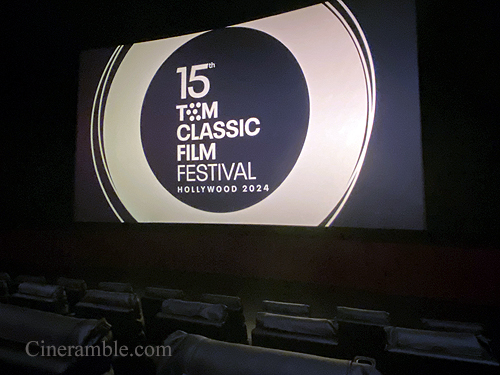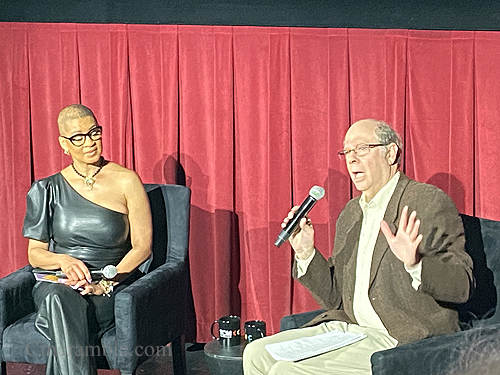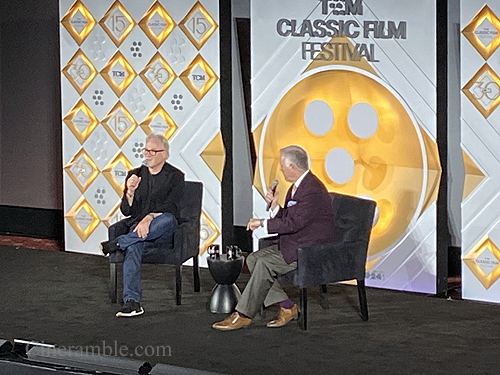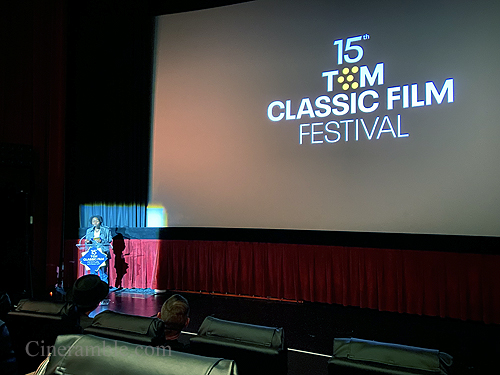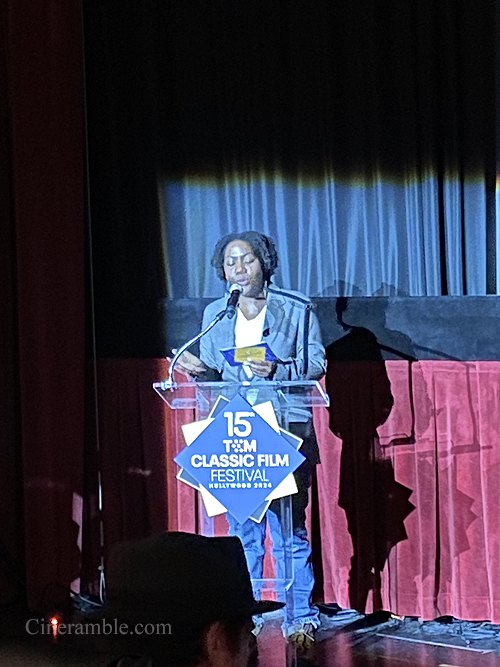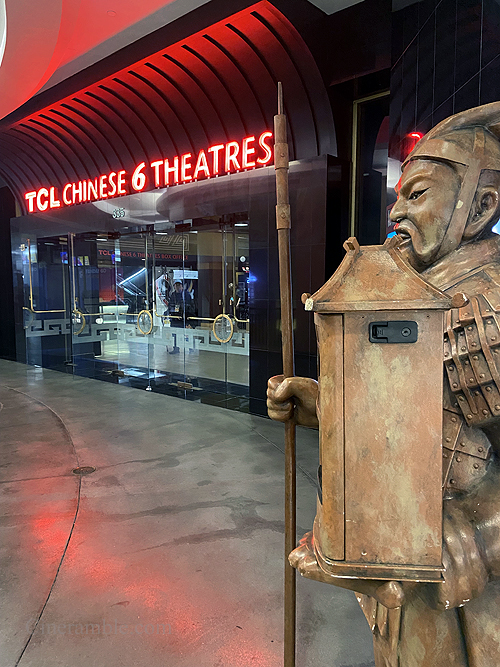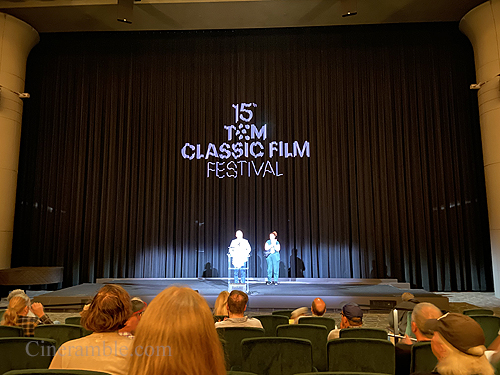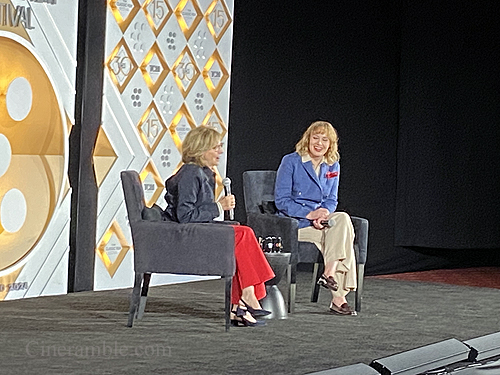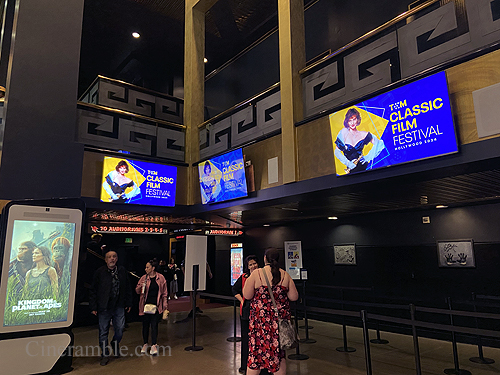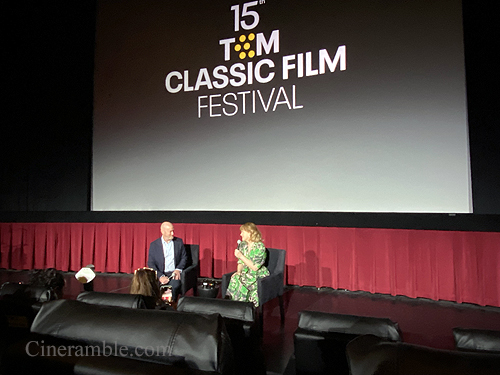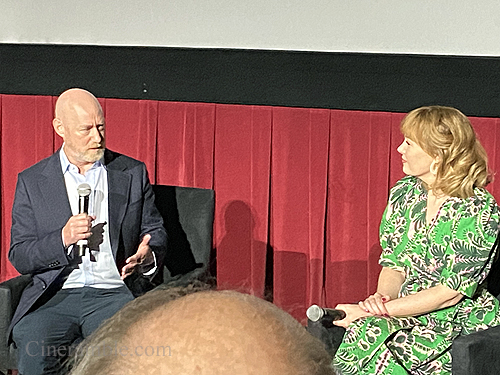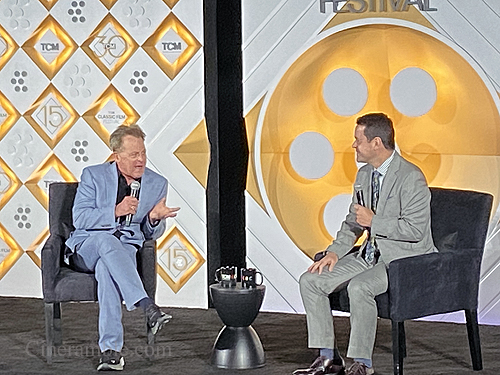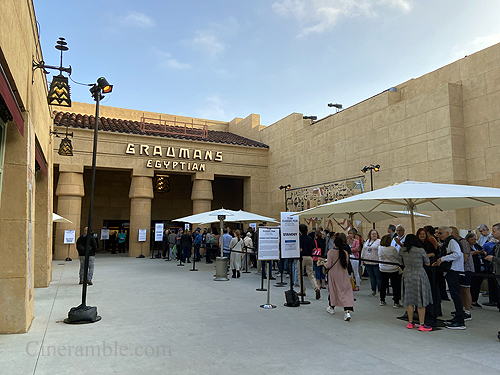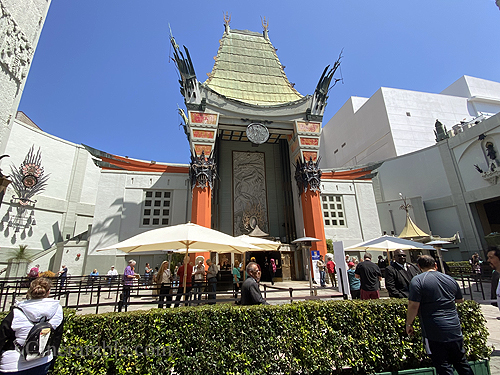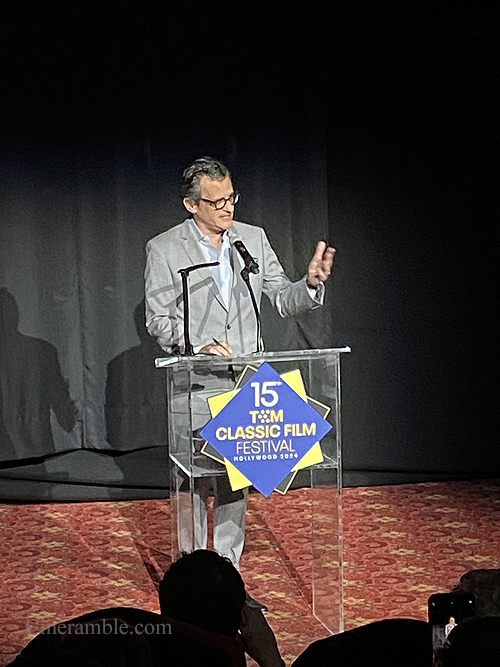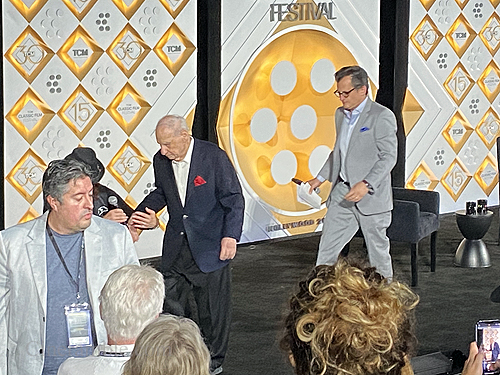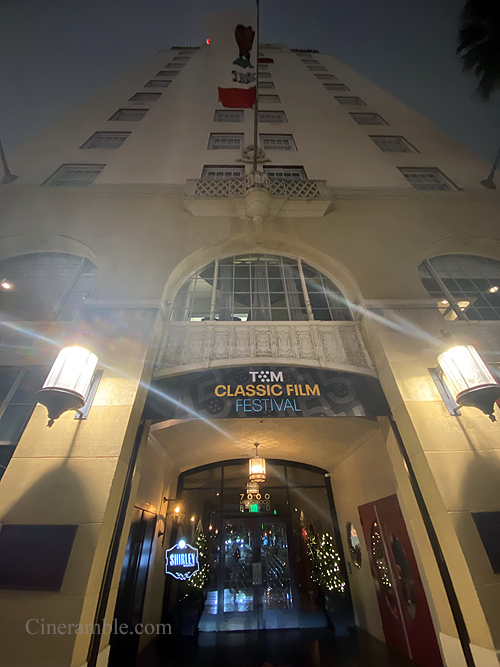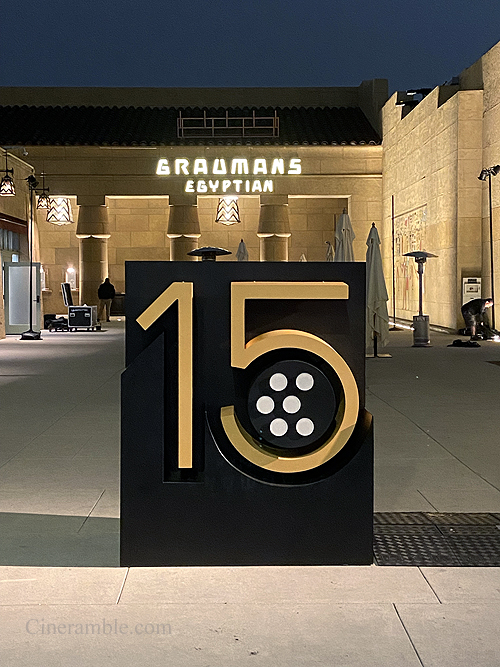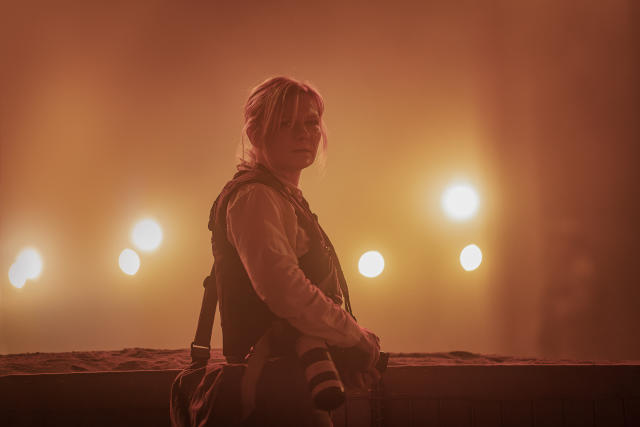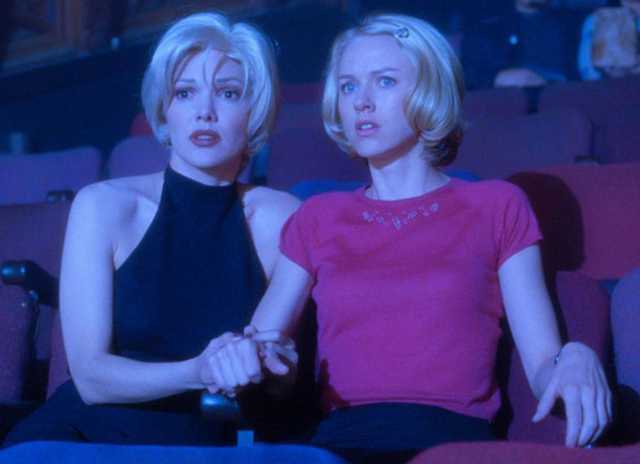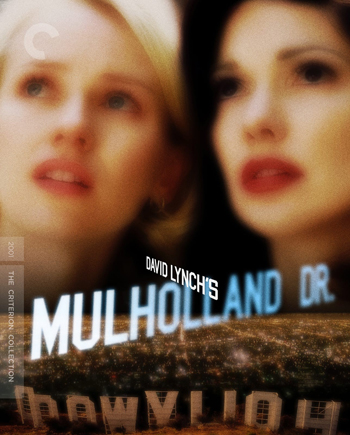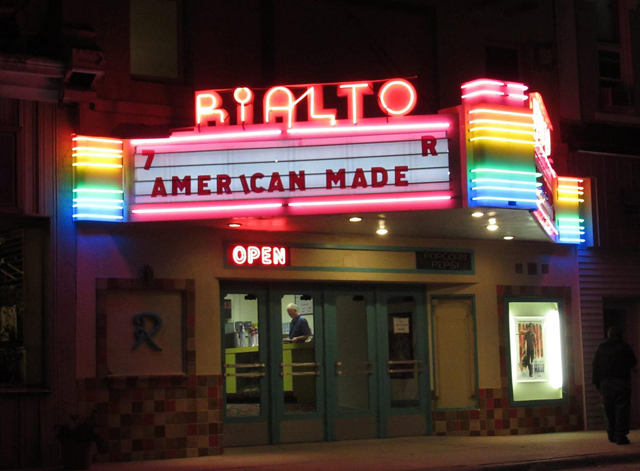
This upcoming summer season is likely going to be very different from the last couple we have had. Coming out of the pandemic affected years, the summers of 2022 and 2023 looked pretty close to the kinds of Summer movie seasons that we were used to in the decade before. The big movie studios were lining up their tentpole features once again in a big way, with all the Summer months booked with the kinds of movies that were ideal for bringing in audiences. Or at least that’s what the studios were hoping for. While the selections of movies felt like Hollywood was back in the Summer season groove, the box office results were not indicative of a return to normal for the industry. Some would say that audiences were still hesitant about going back to the theaters post-pandemic, but there was also the effect of the push towards streaming. Things had changed drastically in the last couple of years, and this year has shown that Hollywood is beginning to readjust somewhat to the new norms. There are decidedly fewer large tentpoles coming out in the upcoming months, which shows that Hollywood in general is slowing things down. Of course, the sparsity of this Summer’s tentpoles also has to do with the months long delays in production due to last year’s labor strikes. We are getting fewer movies because Hollywood either had to push back a number of films or cancel them all together, and it’s a situation that the studios only have themselves to blame. The ones who unfortunately suffer the most out of this situation are the exhibitors, who unfortunately may have to lower their expectations about having a big Summer season this year, or find clever ways to draw more people into the cinemas during the next few months.
Even still, there are some movies worth getting excited about in the days ahead. With the competition being less fierce week to week, there’s a good chance that a lot of these Summer movies may take off and become big hits with strong legs at the box office. Like I do every year, I will be breaking down the Summer movie season with the movies that I think will be the Must Sees, the ones that have me worried, as well as the Movies to Skip. These picks are solely based on my own level of interest in each movie based on my reactions to the buzz surrounding the film and the effectiveness of it’s marketing. My track record has been hit and miss over the years, as some of my good picks have turned out to be bad, and vice versa. I do feel confident about the movies I’m about to discuss below, and my hope is that it provides you the reader with an informed guide of the movies that will be talked about over the Summer movie season. So, with all of that said, let’s take a look at the Movies of Summer 2024.
MUST SEES:
DEADPOOL & WOLVERINE (JULY 26)
Easily the most eagerly anticipated movie of the Summer season. Things have changed a lot since the last time Ryan Reynolds has suited up as the “merc with the mouth.” The former studio that was the home of the Deadpool franchise, 20th Century Fox, has since been merged into The Walt Disney Company, which is the home of all the others Marvel characters. Now, Deadpool no longer has to exist on an island separated from the rest of the MCU due to franchise rights; he now has free reign to play in the same sandbox as the Avengers. This will be the third Deadpool movie, following up on 2018’s Deadpool 2, and the first with Marvel Studios now in creative control. A lot of people worried that Marvel, and by extension Disney, were going to ruin the character by cleaning up his act to make him more presentable to family audiences who watch their movies. But thankfully Kevin Feige and the other Marvel heads understand what has been Deadpool’s appeal and they have come to the conclusion that if it isn’t broke, than don’t fix it. This will be the MCU’s first ever R-Rated film, and it definitely looks like Deadpool’s penchant for edgy material is making the transition intact. Even more exciting is the fact that Ryan Reynolds is bringing another friend from the Marvel/Fox films to come and play with him. Hugh Jackman is once again donning the Adamantiam claws as Wolverine, a character he has now played over a 24 year period. A lot of the excitement for this movie is no doubt do to seeing the two icons finally sharing the screen together (especially after all the teasing that Deadpool made at Wolverine’s expense in the first two movies) and also due to the fact that both are finally making their debuts in the MCU. We only have hint in the trailer as to how the characters are going to factor into the greater MCU storyline, and I feel like Marvel is still holding many surprises close to the chest. We’ll definitely have to watch the movie to find out what all that will be, but the fact that we get more of Deadpool and Wolverine on the big screen is enough to get us all excited for the Summer to start.
INSIDE OUT 2 (JUNE 14)
I feel like Disney has been trying to pay an apology to their Pixar Animation wing over the last year. Last year’s Elemental (2023) was one of the few Disney tentpole films that actually exceeded expectations, managing to build on word of mouth and turn a modest profit at the box office, as opposed to other movies from Disney last year like The Marvels (2023) and Wish (2023) which crashed hard at the box office. Disney recognized that their Pixar brand was still one of their most valuable assets and that it was time to stop neglecting it. After pushing many of Pixar’s films onto streaming during the pandemic, this Spring they finally put those films out into theaters for the first time. It may not have been much as the number of screens were limited, but it was a message from Disney that they recognized that Pixar’s films do indeed belong on the big screen. Elemental made a big difference in changing the perception of Pixar’s value at Disney, and this year it looks like Pixar will indeed be roaring back to the top of the box office with their sequel to one of the biggest hits ever. Inside Out 2 picks up right where the last film left off with the emotions that live inside the head of a young girl about to head into uncharted waters of puberty. This new film expands the roster of characters with more complex emotions moving in and taking things over very quickly, including Anxiety, Envy, Ennui, and Embarrassment. The first Inside Out (2015) did a remarkable job of taking complex concepts like emotional psychology and brilliantly wove it into an engaging and funny story that represented Pixar at their best. It will be nice to revisit this world again, and the next stage of this concept should be interesting as it explores how emotions change as we grow older. It’s great to see Pixar regain it’s valued state in the Disney company, no longer as the easily tossed aside brand shipped off to Disney+, and my hope is that Inside Out 2 puts Pixar back on top of the box office as well.
KINGDOM OF THE PLANET OF THE APES (MAY 10)
One of the best franchise resurrections to have occurred in recent years has to be the return to prominence of the Planet of the Apes series. Once revered as a classic science fiction franchise, the series became more and more irrelevant and mocked for it’s often cheap look, with the apes merely being actors in cheap masks rather than the impressive make-up effect that once set the series apart. Since then, technology has caught up and has gone beyond what make-up effects can do. The Caesar trilogy as it is now known pushed the boundaries of motion capture performance, allowing the acute mannerisms of an actors performance be fully translated into the highly detailed model of a realistic looking ape. Thanks to the incredible talents of an actor like Andy Serkis and the digital wizards at Weta Digital, Caesar was one of the most impressive CGI characters to have ever been put on the big screen, capable of carrying the franchise on his own and re-inventing it. This new film in the franchise seems to be carrying on the franchise to the next level. The motion capture technology looks to have been improved upon even more, with the apes now able to speak and having it look impressively natural. It’s great to see the Planet of the Apes franchise actually take what they’ve built before and push it even further. What is especially exciting with this new film is that it’s going even further with the world-building. This film takes place many years after the death of Caesar and shows us the world of humanity completely overtaken by the natural world, with the apes building up their first attempts at an advanced civilization. Director Wes Ball, who previously worked on the Maze Runner franchise, has a knack for blending the natural world and the mechanical world in a visually beautiful way. This film could definitely be one of this Summer’s most epic adventures and it will be interesting to see if this is another big step for the Planet of the Apes franchise as it begins a new generation.
FURIOSA: A MAD MAX SAGA (MAY 24)
George Miller shook up Hollywood in a big way when he unleashed his long anticipated fourth film in the Mad Max franchise; 2015’s Mad Max: Fury Road. Hailed as a masterpiece for it’s impressively mounted action sequences, many of which that were done with real practical stunts, the movie propelled the veteran Australian director back into the spotlight and had many fans eagerly anticipating what he would do next. Apart from a detour into a smaller scale fantasy flick with 2022’s Three Thousand Years of Longing, Miller very much was eager to return to the desert for more adventures in the world of Mad Max. But, instead of focusing on the Road Warrior himself, Miller was interested in exploring more of the story of the other hero who stood out in the mayhem that was Fury Road; the one armed heroine known as Furiosa. Played by Charlize Theron in Fury Road, the character Furiosa became an instant fan favorite, and it definitely felt like she was a character capable of carrying on with her own series. Well, Miller believed that was the case too, and we now have Furiosa commanding her own film. Because this movie tells us Furiosa’s backstory, she needed to be played by a younger actress, so Anya Taylor-Joy has stepped into the role, doing her best to live up to what Charlize laid the groundwork for. She looks up to the task, but what I think may be the even bigger draw for this movie is the larger than life villain she is going to face off against. Her adversary is a mad man named Dr. Dementus, played by Chris Hemsworth who seems to be going full blown Australian in his demented, off-the-wall performance. It’s going to be a lot of fun to watch Taylor-Joy and Hemsworth working off of each other, and the trailer shows a lot of the crazy, intense action that Miller has already demonstrated himself as being the master at. Can it live up to high bar of Fury Road. Let’s hope so, because it’s been a while since we’ve had a crazy ride like that worth taking.
KINDS OF KINDNESS (JUNE 21)
So, Yorgos Lanthimos has finally made the cut into my “must see” category. After being a little cautious going into his last couple of movies based on the bad experience that I had with The Lobster (2015), I can now say that I am now excited to see what Yorgos has cooking for us next. And he is not wasting any time either. Right on the heels of his multiple Oscar winning feature Poor Things (2023), he has this new film heading to theaters right in the middle of summer. What’s interesting with Kinds of Kindness is that it finds the director working again with contemporary set story, after spending his last couple films in period settings with Poor Thing and The Favourite (2018). Even still, it looks like he’s still applying his odd ball sense of humor based on the trailer. We don’t really get much of an idea about what the story will be in the teaser, but I imagine it will be some kind of darkly comic narrative with echoes of the Coen Brothers mixed in. One of the big pluses for this film is that it is the third collaboration in a row between Yorgos and actress Emma Stone, who is also coming fresh off an Oscar win for Poor Things. Emma has become something of a muse for Mr. Lanthimos as his best work in the past decade has been with her in the cast. Both of them are coming off of the high of their recent Oscar success, and will be interesting to see the encore they have with this feature. At the same time, the movie also has a few other alum from Lanthimos’ other films, including Poor Thing’s Willem Dafoe and The Favourite’s Joe Alwyn, plus an impressive cast of newcomers like Jesse Plemons, Margaret Qualley, and Hong Chau being brought into this weird mix. Of all the counter-programming, art house fare being mixed in this Summer, I feel like this one will be the stand out and hopefully it’s one that hopefully continues to help me become more of a Yorgos Lanthimos fan.
MOVIES THE HAVE ME WORRIED
TWISTERS (JULY 19)
It’s hard to know exactly what kind of movie we are going to get with Twisters. It seems odd that Universal would be making a sequel to their 1996 blockbuster after almost 30 years, but here we are. The original, which was little more than a two hour demo reel for cutting edge for the time environmental CGI animation, isn’t exactly screaming out for a second chapter. But, that’s exactly what we’re getting, and the only thing that seems to have been upgraded is the visual effects now catching up to the present day. Other than that, it looks like we are getting the same story all over again, just with new actors. The original film was notoriously corny and one dimensional, but over time that became part of it’s charm as audiences look to it now as an unintentional comedy. I don’t know how much this sequel is going to lean into that, because it could go either way. It could play things loose and have a little fun with itself, or it could take itself way too seriously and become something of a joke. One thing that could be a negative for this movie is that it doesn’t have quite the same level of star power as the last, with the likes of Bill Paxton, Helen Hunt and Phillip Seymour Hoffman bringing some personality into the film. None of the actors in this new one look bad per say, but I don’t think there is anything to really hook onto with their characters, except maybe the one played by Glen Powell, who is clearly stepping into the same type of role that the late Bill Paxton filled in the original. Powell is on a career upswing right now after appearing in Top Gun: Maverick (2022) and the surprise rom com hit Anyone But You (2023), so that might be something working in the movie’s favorite. I think it’s safe to say that much like the orginal Twister, this is going to end up being a pretty dumb movie. Let’s just hope that it’s the fun kind of dumb that can at least make it an entertaining ride at the cinema.
HORIZON: AN AMERICAN SAGA (PART 1 – JUNE 28 / PART 2 -AUGUST 16)
When Kevin Costner makes a movie, it seems like it’s go for broke every time. The Actor/Director is a passionate filmmaker, and that is something to be admired. However, he is someone known to be his own worst enemy on set; often being fatally self-indulgent. His passion has paid off before in some of his movies, such as the Oscar winning Dances With Wolves (1990), but also at the same time his name has been connected to some of the most notorious flops in movie history, such as The Postman (1997). His next film will indeed be a major test for Mr. Costner, as he returns to the Western genre that loves. This two part epic saga is releasing less than two months apart from each other this Summer, which is going to be quite an experimental release strategy. The last time I recall two interconnected movies being released in the same year, it was for the Matrix sequels, and it didn’t work out so well for those movies. Really, any Western is going to be a hard sell for audiences, given that it’s not a huge money making genre at the moment. So this movie is indeed going to be a gamble, and that could prove disastrous for Kevin if it doesn’t work out, because he apparently has a significant amount of personal investment put into this project. There is no doubt that he’s going to make a beautiful looking movie with impressive panoramic shots; you can see that from the trailer. But, the worry is that Costner’s penchant for self-indulgence could turn this into a fairly dull experience too, with too much time padded with unnecessary subplots and repetitive pacing. Hopefully it’s more engaging than that. One of Costner’s more underrated films was the Western Open Range (2003), which had a very memorable shootout in the finale. My hope is that both parts of Horizon carries that same kind of engaging action, and that all of Costner’s better impulses as a director are utilized, with the indulgences kept in check.
ALIEN: ROMULUS (JUNE 16)
At first the instinct is to roll your eyes at the aspect of there being another film in the Alien franchise. The series honestly hasn’t found it’s footing since James Cameron’s action packed sequel Aliens (1986). This new movie on the other hand does show some promise. From the looks of this teaser, it does appear that the series is returning to it’s horror movie roots. In a sense we are getting the old school haunted house of horrors style Alien, the kind that director Ridley Scott brilliantly realized in the 1978 original. Of course, that’s what the trailer is having us believe will be the case, and it could end up being a misdirect. We’ve been tricked before into believing that Aliens was redefining itself with a new direction, including a couple directed by Ridley Scott himself. But other than James Cameron’s beloved sequel, none of them panned out. One thing that does show promise with this movie is that it’s being directed by Fede Alvarez who made the thriller Don’t Breathe (2016), which is a film that plays upon surviving in claustrophobic situations. Perhaps he’ll make that work well in this movie too, which indeed would be truer to the spirit of the original Aliens. We’ll have to see if the new direction works out in the end. It’s been too long since an Alien movie has truly felt scary. The image of a swarm of facehuggers attacking the crew of the ship certainly is an unsettling image. Plus this movie looks dimly lit and filled with steam, which is a definite call back to the original film’s mood setting environments. There’s always the worry that these franchise revivals are just more empty promises, but here the desire to bring this series back to it’s roots is something worth holding out hope for.
BORDERLANDS (AUGUST 9)
It’s a good time right now to be in the business of adapting video games into film. The Super Mario Bros. Movie (2023) broke all sorts of box office records, while Sonic the Hedgehog has been enjoying a surprisingly successful run of it’s own with his franchise. On the television side, we’ve also seen acclaimed adaptations of The Last of Us and Fallout hit the airwaves. Now this Summer we are getting a big screen adaptations of one of the most popular shoot-em-up games from the last decade; Borderlands. The movie has some promise to it, with an all-star cast attached to it, including a couple Oscar winners like Cate Blanchett and Jamie Lee Curtis. The movie also looks to be faithfully recreating the look of the video games, which had a sort of comic book art style to it. The one thing that worries me about this film is that it seems to be trying to hard to be another Guardians of the Galaxy rip off. Maybe that’s just the way it’s being marketed, but there definitely seems to be a Guardians vibe in the movie’s sense of humor. And yeah Eli Roth is a talented filmmaker, but he is no James Gunn. The reason Guardians of the Galaxy works so well is because James Gunn’s unique voice comes through so well in the incredible balance between the humor of the movie and the emotional resonance beneath the surface. This movie just seems to be aping the humor of the Guardians movies, but is missing the heart. I hope I’m wrong, and that the movie is more substantive than that. But if it is just another copycat, it will be a huge waste of a beloved video game IP that certainly has the potential to be the next big action movie franchise. Let’s hope what ends up saving this movie is a harder, possibly R-rated edge that eschews close to the game itself, and that it’s not watered down for general audiences.
MOVIES TO SKIP:
KRAVEN THE HUNTER (AUGUST 30)
In an environment where comic book movies are universally on the decline, the Sony Spider-Verse is easily scrapping the bottom. Apart from the successful animated projects they have going on and the Tom Hardy led Venom movies, the Sony Spider-Man adjacent movies have been the laughing stock of the industry. 2022’s Morbius seemed to have set a new low for the franchise, but that was until we were subjected to the mind-numbingly bad Madame Web this Spring. Things don’t look too much better going into this Summer with their next film based on the famous Spider-Man adversary, Kraven the Hunter. The movie was actually due to premiere last Fall, but it was pushed back almost a full year partially due to the on-going strikes, but also because the overall field was just too oversaturated with comic book movies. I don’t feel like the delay is going to help this movie either, because the look of it still has that cheap, low effort feeling that we got from Morbius and Madame Web. The only upside is an R-Rating, which will make the violence a bit more brutal. But it’s becoming increasingly sad watching Sony desperately trying to stretch out their stranglehold on the Spider-Man IP by making sub par films based on characters only loosely connected to the webslinger. They are itching to get another proper Spider-Man movie into production again, and it’s sad that we have to suffer through this cynical cash grabs in the meantime. The next animated Spider-Verse movie or MCU connected adventure can’t come soon enough.
TAROT (MAY 3)
Speaking of low effort, here we have yet another horror movie trying to bank off of an already known property. This one uses Tarot cards as the basis for it’s horror elements, and the whole thing just looks like more of a gimmick than an actual movie. The trailer pretty much is showing us the standard jump scare fare we see from a dozen other horror movies, but the things that the characters are supposed to be scarred by seem especially unimaginative. When you make movie monsters that are supposed to be iconic, they have to be distinct and I don’t see creatures like The Magician or The Hermit catching on with audiences. I know that there was a successful horror movie based on the Ouija board game, but that one only worked because it had a visionary in the horror genre like Mike Flannagan behind the camera. I highly doubt that Tarot is going to be any more than the movie we have here.
DESPICABLE ME 4 (JULY 3)
It sadly has become the case in recent years. Illumination Animation has consistently put out subpar movies that are light on story and heavy with sophomoric humor, and they never seem to strive to be any better than what have become. And even still, appealing to the lowest common denominator, they still make a billion dollars with every film they make. I just don’t get it. I understand that these movies are not meant for me, but I’ve seen so many other animation studios branch out and try to do bolder things. Illumination just sort of sticks in their lane, which I guess has worked out for them, but they are creatively inert as a studio. And lo and behold, we get yet another entry in their flagship Despicable Me franchise, with of course those cash cow Minions playing a central role. I haven’t watched anything in this franchise beyond the first film and nothing about the marketing of Despicable Me 4 makes me want to jump back on board either.
So, there you have my preview of the upcoming Summer movie season. It’s going to feel much different this year with the smaller sampling of tentpoles that we’re used to. Marvel, which usually puts out multiple films a year, is giving up their entire calendar year solely to Deadpool and Wolverine, which is a telling sign about the changing dynamics of the industry at this moment. We probably would’ve had a different Summer this year had the studios not wasted so much time trying to wear out the striking workers to no avail. And the sad thing, it’s the already struggling theatrical market that bears the burden of a slower year at the box office. It’s unfortunate, but at the same time, there needed to be a shift made in the way movies were being distributed. The old way was just not working anymore in a post-pandemic environment, and 2023 say many potential blockbusters crash at the box office because too many of them were underperforming because of their massive budgets and lack of interest from audiences. 2024 will hopefully be a year of healing, and perhaps we may find in this year a better sense of what the future may hold for the industry as it starts to find it’s footing again. I doubt this Summer will see another Barbenheimer phenomenon, but there could be some fun surprises at the box office. My only hope is that the movie theaters are able to weather what will likely be another depressed year at the box office, and hopefully there will be enough strong performers at the box office to drive up business. I can imagine Deadpool being a big draw, and sadly yes even the Minions in Despicable Me 4; I still don’t like them, but I know movie theaters owners do because they’re good for business. And hopefully the ratio of box office successes is parallel to what movies are actually good this year. With Barbenheimer, we got two great movies that could also make a lot of money for their studios. My hope is that the movies this Summer follow that lead and are able to be great movies themselves. So, I hope my guide has been helpful. Have a wonderful Summer and a good time at the cinema.
